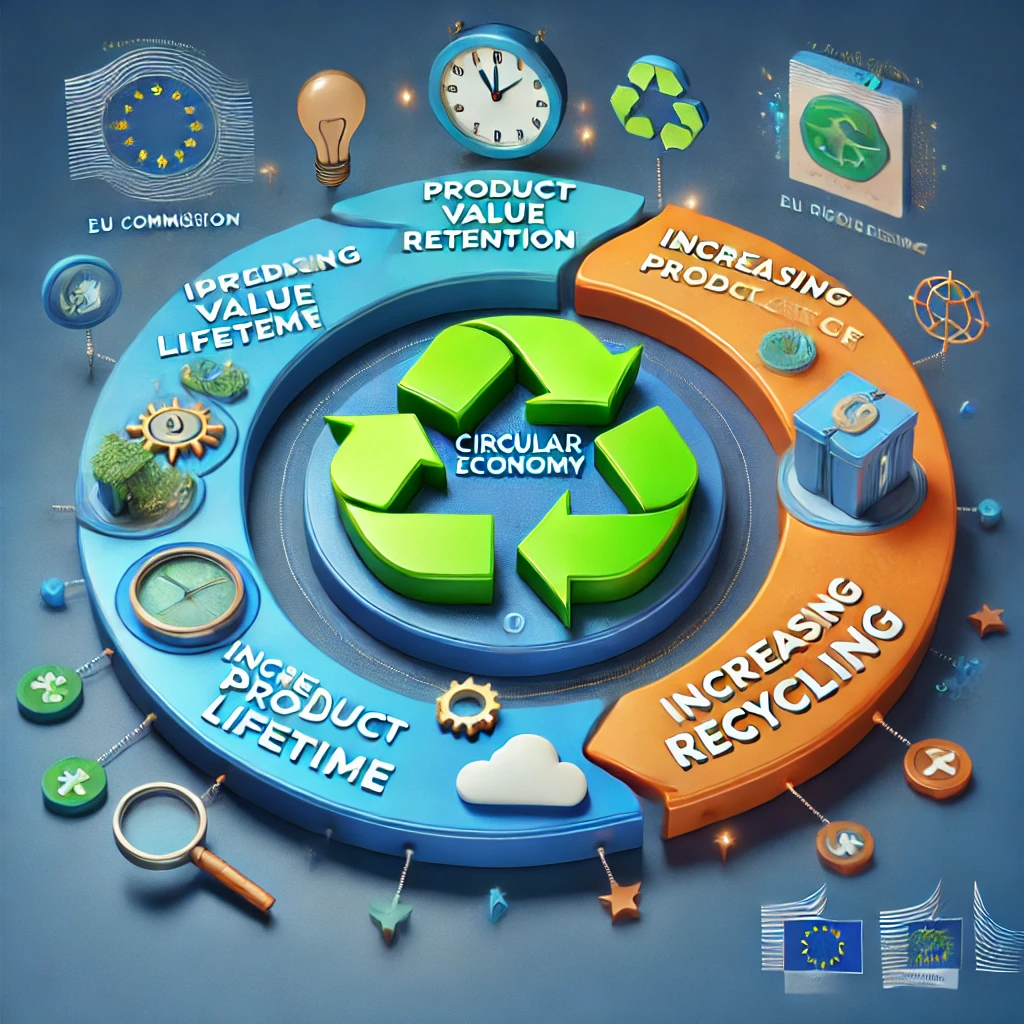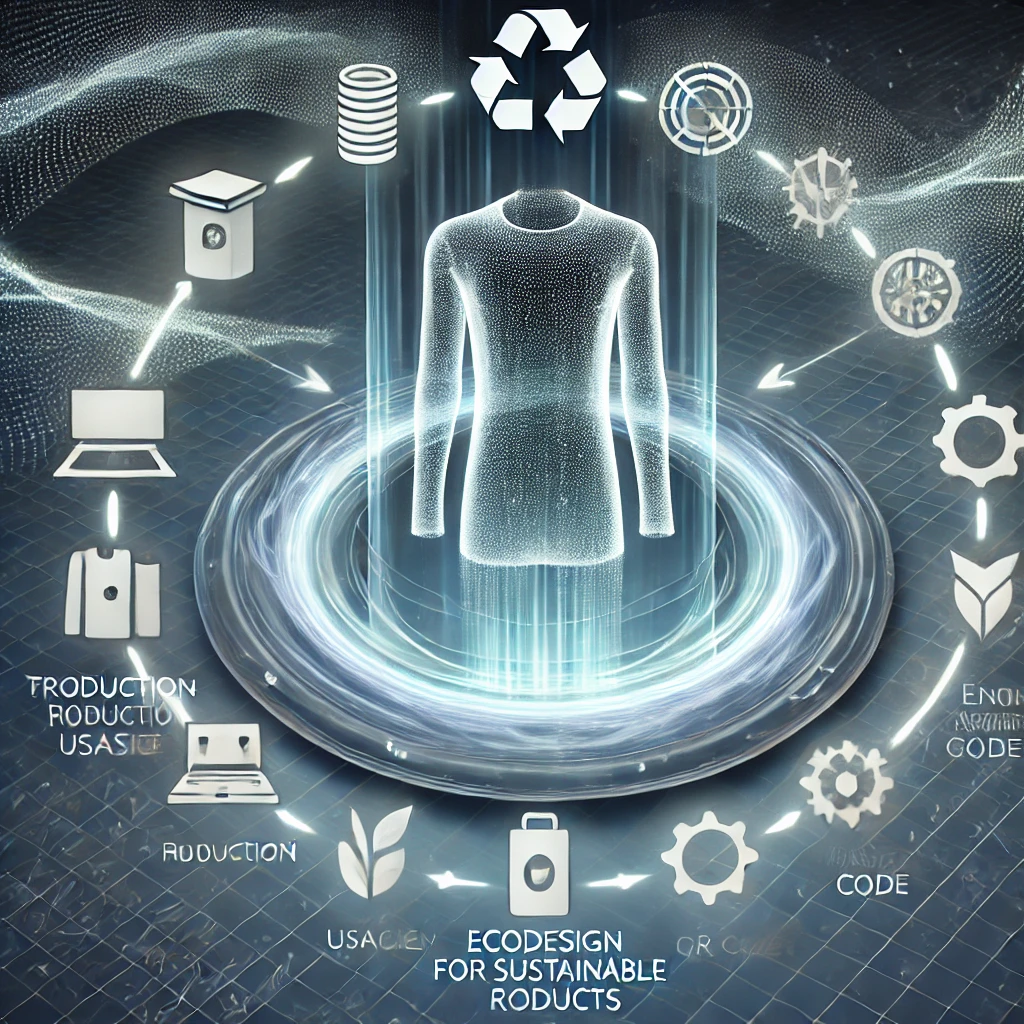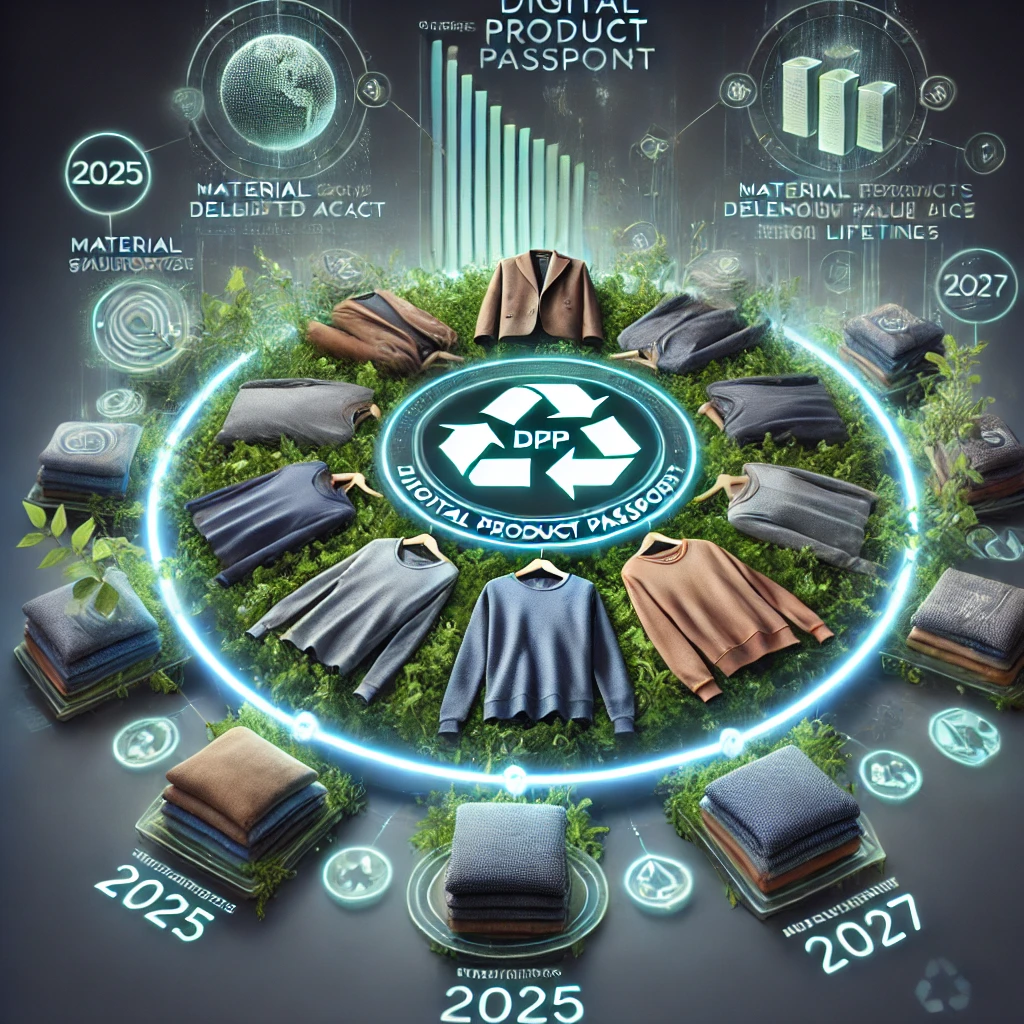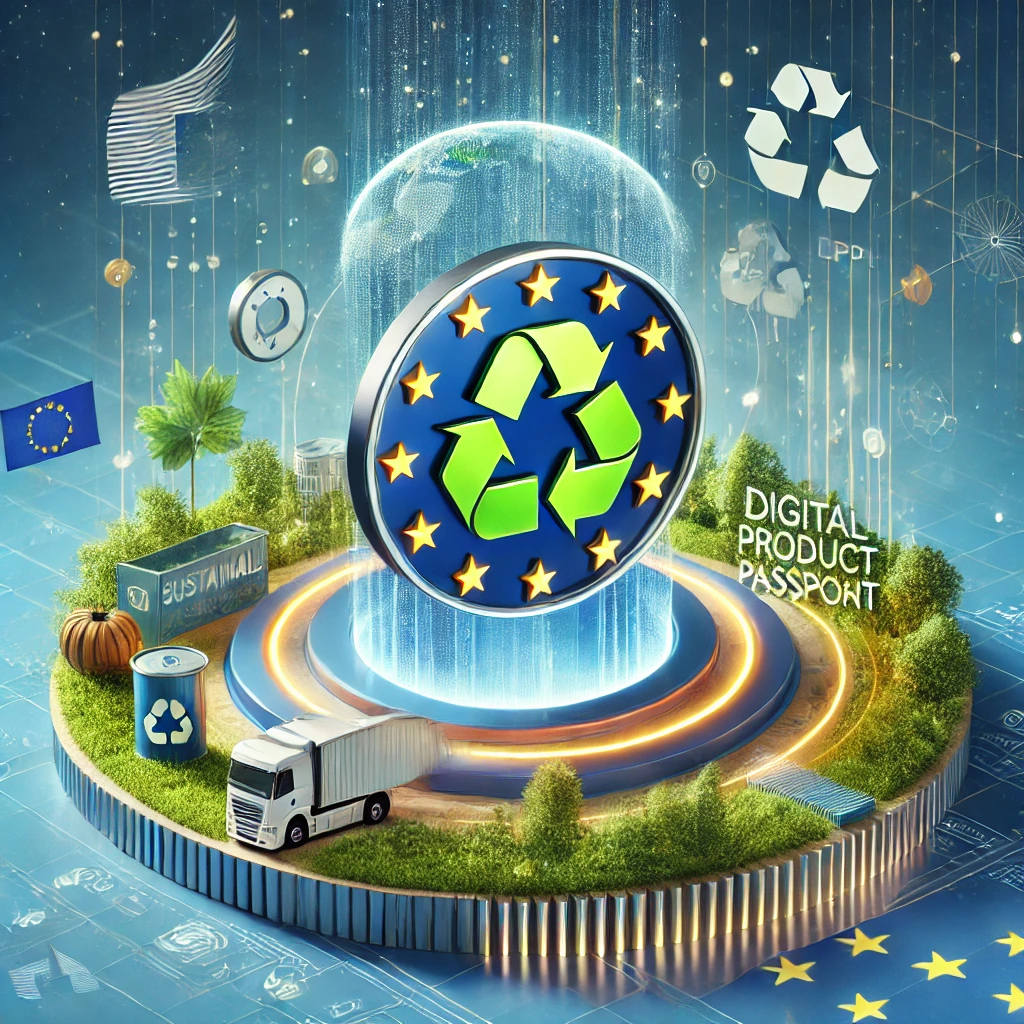CHRIS JONES | AUGUST 28, 2024 | 4 MINUTE READ
In an era where sustainability is more than a buzzword, the European Union (EU) Commission spearheads initiatives that promise significant strides towards a sustainable future.
The Ecodesign for Sustainable Products Regulation (ESPR) is one such bold move aimed at enhancing the value of the EU market by promoting a circular economy. This initiative seeks to maximise product value retention post-sale, encourages products with longer lifespans, and provides access to more transactions through reuse and recycling.
The Digital Product Passport (DPP) is at the heart of this strategy. It is a revolutionary tool designed to enforce and enable these ambitious goals, ensuring all products adhere to the ESPR and demonstrate compliance throughout their lifecycle.

Circular Economy and ESPR Goals
The Essence of the Digital Product Passport (DPP)
The DPP, a unique cornerstone for the circular economy, provides a mandatory framework for data supporting circular economy operations and sustainability evidence. Its primary role is to serve as a digital twin of the product, accessible via a unique digital identifier. This setup ensures that all products adhering to the ESPR can demonstrate compliance throughout their lifecycle, from production to end-of-life recycling, thus enhancing transparency and traceability in product manufacturing and usage.

A digital twin to ensure compliance with ESPR
Objectives and Timeline
The DPP's overarching goal is to diminish the industry's environmental impact by promoting material and energy efficiency, enhancing sustainable production methods, and extending product lifetimes. Moreover, it aims to create new business opportunities by developing a circular value chain. The DPP also plays a crucial role in supporting consumers and providing them with the necessary information to make more sustainable choices. The directive sets timelines for all product sectors, and the initial three product sectors to be implemented are batteries, textiles, and consumer electronics.
The specific timeline for textiles, with standards defined during 2025, publication of the Textiles Delegated Act in January 2026, and general enforcement by mid-2027, marks a significant step forward in regulatory measures.

A challenging timeline for DPP implementation for Textiles
Key Features of the DPP
The DPP is structured to encompass over 100 data points from various stakeholders, categorised into several groups, including digital and trading identifiers, product details, brand commitments, and circularity information. This extensive data collection is initially focused on compliance but also aims to foster an agile and transparent supply chain, leading to more sustainable production practices.
The Textiles Delegated Act will define mandatory data points, levels, and carriers for the textiles sector to ensure comprehensive tracking and reporting. This will include:
- Data Points: Specific information is required from each stakeholder to ensure that products meet ESPR guidelines.
- Data Carriers: Technologies used to carry or store data, such as QR codes, RFID tags, or digital links, ensuring easy access to origin data and update of the DPP throughout the product’s lifecycle.
- Data Levels: Different levels of data granularity
GTIN (Global Trade Identification Number) is a product/colour/size number that is unique to a specific supply chain
Manufacturing batch/lot to provide actual material data and primary data from processes
Item via a serialised number unique to each product unit
DPP Data
The precise definition of the DPP mandatory data points will be defined during 2025, and they can be categorised within these groups:
- Digital and Trading Identifiers: These include global unique identifiers like GS1.
- Product Details and Technical Documentation: Comprehensive product design and specifications information.
- Brand Information and Commitments: Details on brand sustainability commitments and practices.
- Circularity Information: Design strategies, instructions for repair, and information on circularity partners.
- Supply Chain Details: Information about the chain of custody processes and other supply chain data.
- Material Details: Material composition, recycled content, and origin information.
- Care Information: Care instructions plus options for repair and recycling.
- Compliance and Sustainability Evidence: Proof of adherence to regulatory standards and sustainable practices.
The DPP will also enable the sharing of any optional data the brand or retailer wishes to include.
Actors and Their Roles in the DPP Framework
The successful implementation of the DPP involves multiple actors, each playing critical roles:
- EU Commission: Monitors and enforces DPP regulations to ensure the smooth implementation of the ESPR.
- Supply Chain Partners: Provide necessary data that enhances supply chain insights and supports circular economy activities.
- Brands and Retailers: Engage with consumers by providing detailed product data, enhancing post-sale interactions, and supporting sustainable production choices.
- Consumers: Utilize the DPP to make informed purchasing decisions and maintain products for extended use, reducing overall resource consumption.
- Circular Economy Operators: Update and maintain the DPP with relevant data to maximise product value and lifespan.

Roles of Different Actors in the DPP Framework
DPP's Impact on Sustainable Production and Consumption
The DPP supports the EU’s vision for a sustainable, circular economy and facilitates a shift in consumer behaviour by providing insights into product lifecycles and sustainability. It empowers all stakeholders by providing the necessary tools to verify compliance and, via commercial market pressures, encourages an industry-wide adoption of more sustainable practices.
Call to Action
As we move towards a more sustainable future, innovative regulatory tools like the Digital Product Passport will be crucial in shaping an eco-friendly market landscape.
JBSO Group is at the forefront of assisting businesses in navigating and implementing these new regulations effectively. We invite you to engage with our services to maximise your readiness and compliance with ESPR and DPP, ensuring your business survives and thrives in this new sustainable economy.
Please feel free to ask questions and share your thoughts and comments below.
Author Chris Jones

For over three decades, Chris has helped global brands, retailers, and manufacturers align people, processes, and technology, driving transformation projects to maximise business impact.
This article is also published on LinkedIn:

